The 30 Best Coming-of-Age Horror Movies
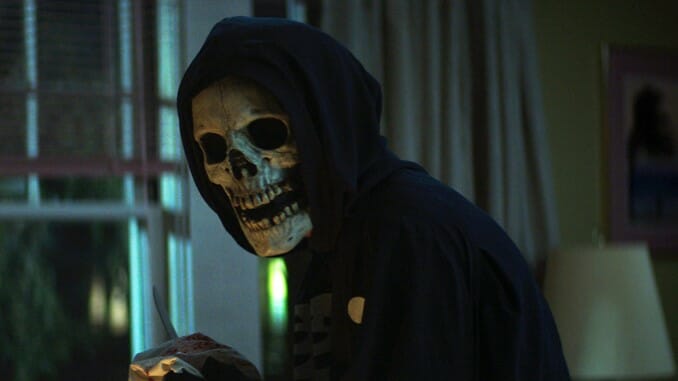
Growing up is scary. Bodily changes, mind-bending mood shifts and unwelcomed self realizations liken our adolescent years to a horror saga, except monsters and jump scares come to life as odd crushes and fitting room glances that last a little too long. To lament the horrifying process of teenagerdom, many filmmakers have brought the aging experience to the screen through symbolic horror. Our staff arranged a list of the 30 best coming-of-age horror movies that employ genre conventions to remind us of the frightening experience of adolescent metamorphosis.
Here are the 30 best coming-of-age horror movies:
1. Ginger Snaps
Year: 2000
Director: John Fawcett
Stars: Emily Perkins, Katharine Isabelle, Kris Lemche, Mimi Rogers
Rating: N/A
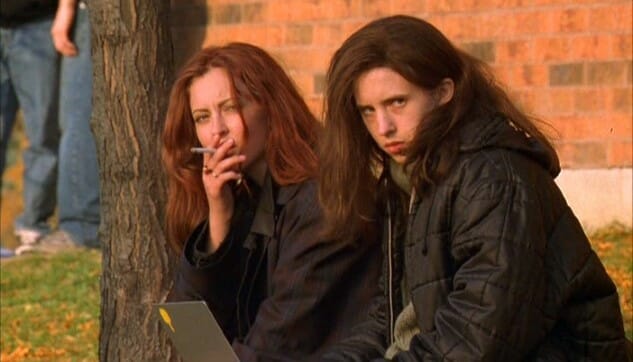
Ginger Snaps is a high school werewolf story, but before you go making any Twilight comparisons, let me state for the record: Where Twilight is maudlin, Ginger Snaps is vicious. A pair of death-obsessed, outsider sisters, Ginger and Brigitte, are faced with issues of maturation and sexual awakening when Ginger (Katharine Isabelle) is bitten by a werewolf. As she begins to become bolder and more animalistic in her desires, the second, meeker sister (Emily Perkins) searches for a way to reverse the damages before Ginger carves a path of destruction through their community. Reflecting the influence of Cronenberg-style body horror and especially John Landis’s American Werewolf in London, Ginger Snaps is a surprisingly effective horror movie and mix of drama/black comedy that brought the werewolf mythos into suburbia in the same sort of way Fright Night managed to do so with vampires. It also made a genre star of Isabelle, who has since appeared in several sequels and above-average horror flicks such as American Mary. Even if the condition of lycanthropism is an obvious parallel to the struggles of adolescence and puberty, Ginger Snaps is the one film that has taken that rich vein of source material and imbued it with the same kind of punk spirit as Heathers. —Jim Vorel
2. Let the Right One In
Year: 2008
Director: Tomas Alfredson
Stars: Kåre Hedebrant, Lina Leandersson, Per Ragnar, Ika Nord, Peter Carlberg
Rating: R
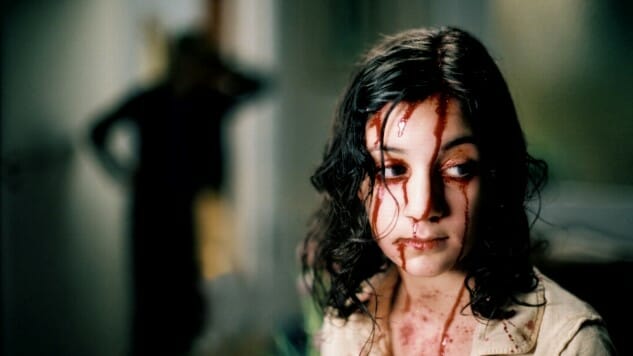
Vampires may have become cinema’s most overdone, watered-down horror villains, aside from zombies, but leave it to a Swedish novelist and filmmaker to reclaim frightening vampires by producing a novel and film that turned the entire genre on its head. Let the Right One In centers around the complicated friendship and quasi-romantic relationship between 12-year-old outcast Oskar and Eli, a centuries-old vampire trapped in the body of an androgynous (although ostensibly female) child who looks his same age. As Oskar slowly works his way into her life, drawing ever-closer to the role of a classical vampire’s human “familiar,” the film questions the nature of their bond and whether the two can ever possibly commune on a level of genuine love. At the same time, it’s also a chilling, very effective horror film whenever it chooses to be, especially in the absolutely spectacular final sequences, which evoke Eli’s terrifying abilities with just the right touch of obstruction to leave the worst of it in the viewer’s imagination. The film received an American remake in 2010, Let Me In, which has been somewhat unfairly derided by film fans sick of the remake game, but it’s another solid take on the same story that may even improve upon a few small aspects of the story. Ultimately, though, the Swedish original is still the superior film thanks to the strength of its two lead performers, who vault it up to become perhaps the best vampire movie ever made.–Jim Vorel
3. We’re All Going to the World’s Fair
Year: 2022
Director: Jane Schoenbrun
Stars: Anna Cobb, Michael J. Rogers
Rating: NR
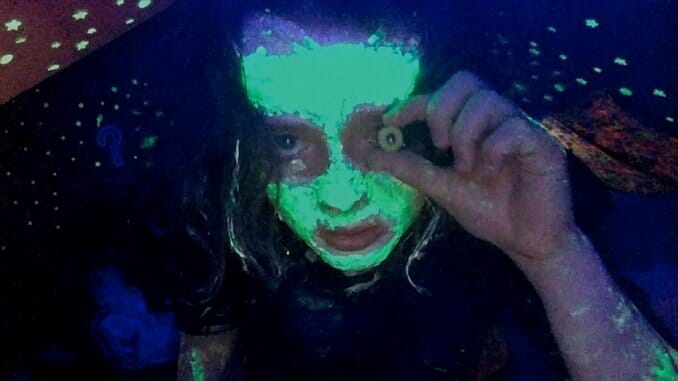
We’re All Going to the World’s Fair isn’t straightforwardly a “horror” movie–even if the title reads like an invocation chanted by hypnotized cultists doomed to whatever fate awaits them at the fairgrounds. That, of course, is more or less exactly what it is, as evinced in the opening sequence, where young Casey (Anna Cobb) recites the phrase three times while staring wide-eyed at her computer monitor. Innocent enough, if firmly eerie. Then she pricks her finger with a button’s pin about two dozen times in rapid succession and streaks her blood on the screen (though just out of the audience’s line of sight) to conclude the ritual. All that’s left is to wait and see how joining in this online “game” changes her, as if undergoing a Cronenbergian rite of passage. What writer/director Jane Schoenbrun wants viewers to wonder is whether those changes are in earnest, and whether changes documented by other participants in the “World’s Fair challenge” are legit or staged. They’re unreliable narrators. To an extent, so is Casey–insomuch as teens stepping into the world solo for the first time can be relied on for anything resembling objectivity. There’s also the question of exactly where Casey draws the line between truth and macabre make-believe, and of course whether that belief is made up. Maybe there really is a ghost in the machine. Or maybe a life predominantly lived in a virtual space–because physical space is dominated by isolation and bad paternal relationships–naturally inclines people toward delusion at worst and an unerring sensation of disembodiment at best. We’re All Going to the World’s Fair concludes with ambiguity and atmospheric loss, as if we’re meant to consider leaving childhood behind as a form of tragedy. Spoken in Schoenbrun’s language, that process is painful, transformative and–first and foremost–an internal experience regardless of the movie’s stripped-down visual pleasures. Outside forces influence Casey, but Casey ultimately controls the direction those forces take her. In a way, that’s empowering. But Schoenbrun belies the collective dynamic implied in We’re All Going to the World’s Fair’s title with Casey’s lonesome reality.–Andy Crump
4. Super Dark Times
Year: 2017
Director: Kevin Phillips
Stars: Owen Campbell, Charlie Tahan, Elizabeth Cappuccino, Max Talisman, Amy Hargreaves
Rating: NR
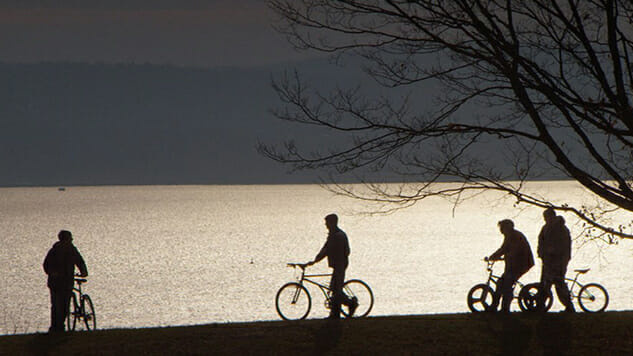
Super Dark Times lets us in on a secret harbored by a group of teen boys: They are complicit in (and for one of them, directly responsible for) the death of their friend. Bored and frustrated by their dreary ‘90s New England town, the teenage boys fight over a bag of weed, leading to an accidental death by katana that they haphazardly cover up. The emotional fallout of the accident is anchored by rich performances by Charlie Tahan and Owen Campbell, both portraying confused high schoolers tortured by loss and guilt. The film’s wooded suburban setting adds suffocation to the angst, delivering comical coming-of-age chaos as a string of unfortunate murders riddle the hormonal teens with dread.—Sage Dunlap
5. Valerie and Her Week of Wonders
Year: 1970
Director: Jaromil Jires
Stars: Jaroslava Schallerová, Helena Anýžová, Petr Kopřiva, Jiří Prýmek
Rating: NR
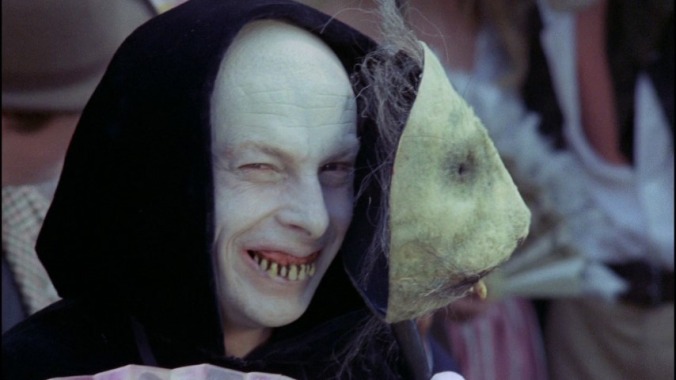
Over the course of seven days, a young girl on the precipice of womanhood is hounded by a vampire, menaced by a pervy priest, and romanced by a handsome young chap who may or may not be her sibling. That’s quite a packed slated for a 76-minute film. But the full breadth of lovely weirdness in Jaromil Jireš’ Valerie and Her Week of Wonders can’t be easily captured through any number of words. Put simply, it’s a treasure trove of delights for any lover of the surreal, and a must for fairy tale connoisseurs. (Most of all, it’s gorgeous from start to finish.) Sexual politics make up the center of this lyrical little pohádka; Valerie is both preyed on and protected by her femininity. There’s a mother lode of symbolism that can be mined out of Jireš’ work here, but the film baffles on first viewing and demands one’s utmost attention. Luckily, it has great rewatch value.—Andy Crump
6. Raw
Year: 2016
Director: Julia Ducournau
Stars: Garance Marillier, Ella Rumpf, Rabah Nait Oufella
Rating: R
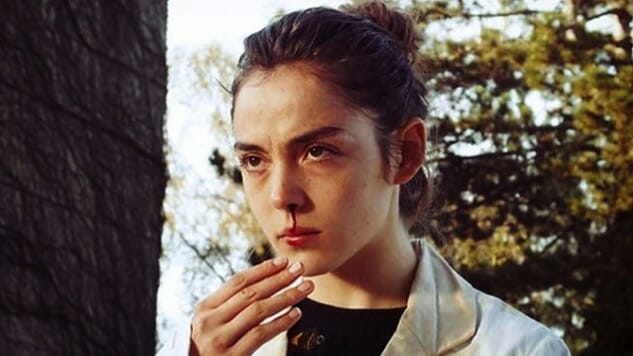
Julia Ducournau’s Raw is a “coming-of-age movie” in that the film’s protagonist, naive incoming college student Justine (Garance Marillier), comes of age over the course of its running time. She parties, she breaks out of her shell, she learns about who she really is as a person on the verge of adulthood. But most kids who come of age in the movies don’t realize that they’ve spent their lives unwittingly suppressing an innate, nigh-insatiable need to consume raw meat. “Hey,” you’re thinking, “that’s the name of the movie!” Allow Ducournau her cheekiness. More than a wink and nod to the picture’s visceral particulars, Raw is an open concession to the harrowing quality of Justine’s grim blossoming. Nasty as the film gets, and it does indeed get nasty, the harshest sensations Ducournau articulates here tend to be the ones we can’t detect by merely looking: Fear of feminine sexuality, family legacies, popularity politics and uncertainty of self govern Raw’s horrors as much as exposed and bloody flesh. It’s a gorefest that offers no apologies and plenty more to chew on than its effects.—Andy Crump
7. A Nightmare on Elm Street
Year: 1984
Director: Wes Craven
Stars: Heather Langenkamp, Robert Englund, John Saxon, Johnny Depp, Ronee Blakley, Amanda Wyss, Nick Corri
Rating: R
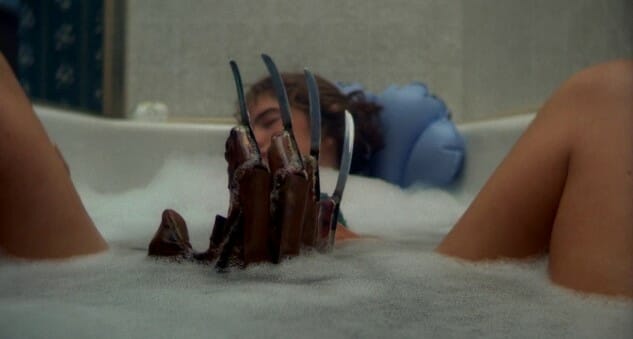
Of the big three slasher franchises–Halloween, Friday the 13th and this–it’s A Nightmare on Elm Street that arguably presented us with the most complete and perfectly polished of original installments. No doubt this is a factor of being the last to come along, as Wes Craven had a chance to watch and be influenced by the brooding Carpenter and the far more shameless and tawdry Cunningham in several F13 sequels. What emerged from that stew of influences was a killer who shared the indestructibility of Myers or Voorhees, but with a twist of Craven’s own demented sense of humor. That’s not to say Freddy Krueger (Robert Englund) is a comedian–at least not here in the first Nightmare, where he’s presented as a serious threat and a genuinely frightening one at that, rather than the self-parodying pastiche he would become in sequels such as Final Nightmare–but his gleeful approach toward murder and subsequent gallows humor make for a very different breed of supernatural killer, and one that proved extremely influential on post-Nightmare slashers. The film’s simple premise of tapping into the horrors of dreaming and questionable reality was like a gift from the gods presented directly to the artists and set designers, given carte blanche to indulge their fantasies and create memorable set pieces like nothing else ever seen in the horror genre to that point. It’s a phantasmagoria of morbid humor and bad dreams.—Jim Vorel
8. The Witch
Year: 2016
Director: Robert Eggers
Stars: Anya Taylor-Joy, Ralph Ineson, Kate Dickie
Rating: R

From its first moments, The Witch strands us in a hostile land. We watch (because that’s all we can do, helplessly) as puritan patriarch William (Ralph Ineson) argues stubbornly with a small council, thereby causing his family’s banishment from their “New England” community. We watch, and writer-director Robert Eggers holds our gaze while a score of strings and assorted prickly detritus—much like the dialogue-less beginning to There Will be Blood —rise to a climax that never comes. It’s a long shot, breathing dread: The wagon lurches ever-on into the wilderness, piling the frontier of this New World upon the literal frontier of an unexplored forest. It’s 1620, and William claims, “We will conquer this wilderness.” Eggers’ “New England Folk Tale” is a horror film swollen with the allure of the unknown. To say that it’s reminiscent of the Salem Witch Trials, which take place 70 years after the events in the film, would be an understatement—the inevitable consequences of such historic mania looms heavily over The Witch. All of this Eggers frames with a subconscious knack for creating tension within each shot, rarely relying on jump scares or gore, instead mounting suspense through one masterful edit after another. The effect, then, is that of a building fever dream in which primeval forces—lust, defiance, hunger, greed—simmer at the edges of experience, avoided but never quite conquered. But what’s most convincing is the burden of puritanical spirituality which blankets the film’s every single moment, a pall through which every character—especially teenage Thomasin (Anya Taylor Joy)—struggles to be, simply, a regular person. There is no joy in their worship, there is only gravitas: prayers, fasting, penitence and fear. And it’s that fear which drives the film’s horror, which eventually makes even us viewers believe that, at the fringes of civilization, at the border of the unknown, God has surely abandoned these people.—Dom Sinacola
9. Jennifer’s Body
Year: 2009
Director: Karyn Kusama
Stars: Megan Fox, Amanda Seyfried, Johnny Simmons, J. K. Simmons, Amy Sedaris, Adam Brody
Rating: R
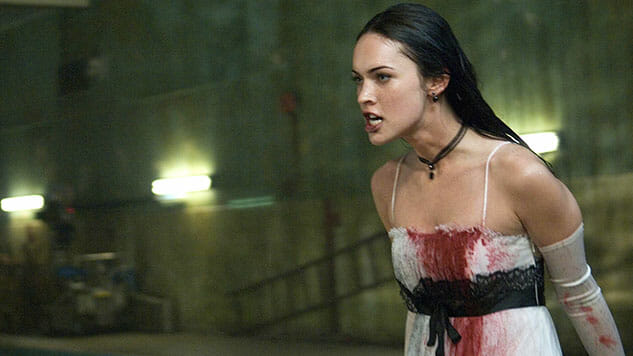
“Hell is a teenage girl.” Horror royalty Megan Fox delivers an era-defining performance as Jennifer Check, a succubus who eats boys (not people, a distinction she is quick to make). Her antics are a metaphorical rejection of brutality against women, which is why Jennifer’s Body has achieved cult status across multiple generations of horror fans. It’s easy to identify with the film’s coming-of-age themes, whether you spent high school as a popular, crazed sex demon like Jennifer or a shy, late bloomer like Needy (Amanda Seyfried). On top of its feminist and queer themes, the movie sits in the upper echelon of campy teen horror, with iconic costumes and stinging one-liners that have continued to remain in the zeitgeist 15 years later.—Sage Dunlap
10. It Follows
Year: 2015
Director: David Robert Mitchell
Stars: Maika Monroe, Keir Gilchrist, Daniel Zovatto, Jake Weary, Olivia Luccardi, Lili Sepe
Rating: R
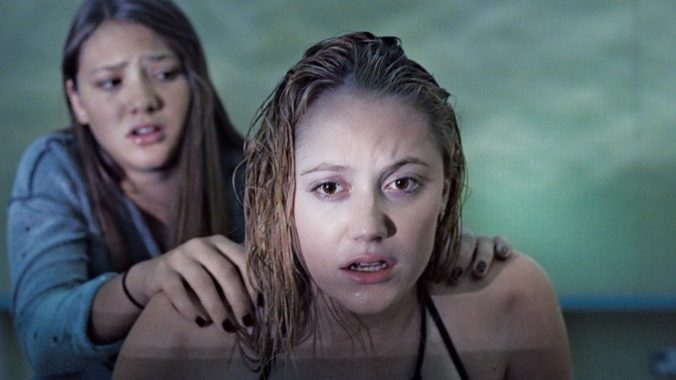
The specter of Old Detroit haunts It Follows, the best movies among Netflix’s horror selections. In a dilapidating ice cream stand on 12 Mile, in the ’60s-style ranch homes of Ferndale or Berkley, in a game of Parcheesi played by pale teenagers with nasally, nothing accents—if you’ve never been, you’d never recognize the stale, gray nostalgia creeping into every corner of David Robert Mitchell’s terrifying film. But it’s there, and it feels like SE Michigan. The music, the muted but strangely sumptuous color palette, the incessant anachronism: In style alone, Mitchell is an auteur seemingly emerged fully formed from the unhealthy womb of Metro Detroit. Cycles and circles concentrically fill out It Follows, from the particularly insular rules of the film’s horror plot, to the youthful, fleshy roundness of the faces and bodies of this small group of main characters, never letting the audience forget that, in so many ways, these people are still children. In other words, Mitchell is clear about his story: This has happened before, and it will happen again. All of which wouldn’t work were Mitchell less concerned with creating a genuinely unnerving film, but every aesthetic flourish, every fully circular pan is in thrall to breathing morbid life into a single image: someone, anyone slowly separating from the background, from one’s nightmares, and walking toward you, as if Death itself were to appear unannounced next to you in public, ready to steal your breath with little to no aplomb. Initially, Mitchell’s whole conceit—passing on a haunting through intercourse—seems to bury conservative sexual politics under typical horror movie tropes, proclaiming to be a progressive genre pic when it functionally does nothing to further our ideas of slasher fare. You fornicate, you find punishment for your flagrant, loveless sinning, right? (The film has more in common with a Judd Apatow joint than you’d expect.) Instead, Mitchell never once judges his characters for doing what practically every teenager wants to do; he simply lays bare, through a complex allegory, the realities of teenage sex. There is no principled implication behind Mitchell’s intent; the cold conclusion of sexual intercourse is that, in some manner, you are sharing a certain degree of your physicality with everyone with whom your partner has shared the same. That he accompanies this admission with genuine respect and empathy for the kinds of characters who, in any other horror movie, would be little more than visceral fodder for a sadistic spirit, elevates It Follows from the realm of disguised moral play into a sickly scary coming-of-age tale. Likewise, Mitchell inherently understands that there is practically nothing more eerie than the slightly off-kilter ordinary, trusting the film’s true horror to the tricks our minds play when we forget to check our periphery. It Follows is a film that thrives in the borders, not so much about the horror that leaps out in front of you, but the deeper anxiety that waits at the verge of consciousness—until, one day soon, it’s there, reminding you that your time is limited, and that you will never be safe. Forget the risks of teenage sex, It Follows is a penetrating metaphor for growing up. —Dom Sinacola
11. Carrie
Year: 1976
Director: Brian De Palma
Stars: Sissy Spacek, Piper Laurie, John Travolta, P.J. Soles
Rating: R

The tropes and individually famous scenes of Carrie are so well known and ingrained into the pop cultural consciousness that you’d be forgiven for thinking you didn’t really need to see the original film to understand what makes it significant. But Carrie is much more than a precariously balanced bucket of pig’s blood: It’s a film that vacillates between darkly humorous and legitimately disturbing, mean-spirited and cruel, that terrifying mix of tones set immediately by what happens to poor Carrie White (Sissy Spacek) in the school’s locker room. Rarely has abject terror and helplessness been so perfectly captured as it is here, Carrie desperately, pathetically clinging to her classmates in terror of her first menstruation, only to be derided and pelted with tampons as she lays in a screaming heap. There’s simply no coming back from the kinds of humiliations she suffers, and none of her peers care to find out that Carrie’s home life is even more abusive. Spacek was rightly rewarded with an Oscar nomination for her performance in this, the first film adaptation of a Stephen King work, as was Piper Laurie as her mother–this is back in the ’70s when not one but two actresses from a horror film could actually receive Academy Award nominations (my how things have changed). Carrie is a brisk film which thrives on those two strong, central performances, building to the gloriously cathartic orgy of revenge we all know is coming. —Jim Vorel
12. Bring Her Back
Year: 2025
Directors: Danny Philippou, Michael Philippou
Stars: Billy Barratt, Sora Wong, Jonah Wren Phillips, Sally Hawkins
Rating: R
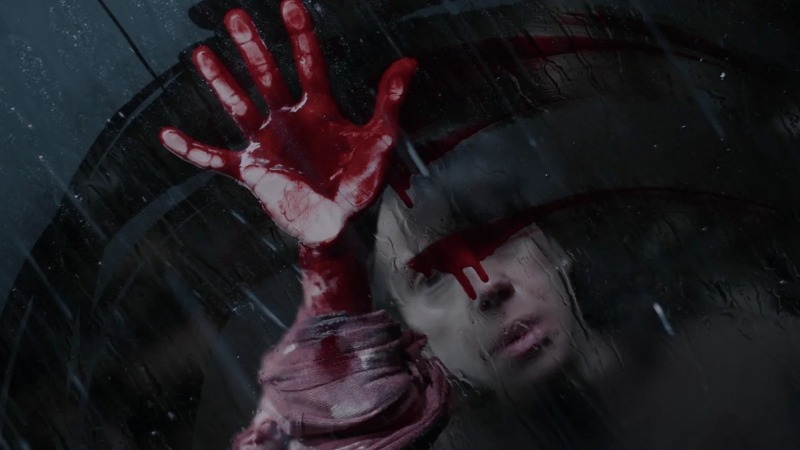
In stark contrast to the (relatively) welcoming multiplex horror of Talk to Me, Danny and Michael Philippou’s sophomore horror feature Bring Her Back makes clear its intention to drag the viewer screaming down into the mouth of hell through sheer, agonizing uncomfortability. This is an absolute endurance run of a watch, a harrowing but equally emotional story laden with that ubiquitous prestige horror tandem of Grief and Trauma, but set apart by just how nasty it commits to being in its delivery of both physical violence (toward children, no less) and psychic misanthropy. On the surface, Bring Her Back is almost a classical fable: Two children, one on the cusp of adulthood, adopted after their father’s passing by a woman who turns out to be something akin to wicked stepmother. But the Australian twin filmmakers add layers of painful complexity to each character’s relationship with each other and with the truth of their circumstances, turning Bring Her Back into an intense psychological minefield, particularly for the mostly blind Piper (Sora Wong), a long-suffering girl who must wade through the perpetual lies she is fed (to both “protect” and deceive) on account of her lack of sight. Stand-out performances from an unhinged Sally Hawkins and especially from deeply disturbing, demonically possessed Aussie child actor Jonah Wren Phillips make Bring Her Back extremely difficult to banish from thought after witnessing it. Even through closed eyes, the audio alone will haunt you. —Jim Vorel
13. The Fear Street Trilogy
Year: 2021
Director: Leigh Janiak
Stars: Kiana Madeira, Olivia Scott Welch, Benjamin Flores Jr., Julia Rehwald, Fred Hechinger, Ashley Zukerman, Darrell Britt-Gibson, Maya Hawke, Sadie Sink, Emily Rudd, Ryan Simpkins, McCabe Slye, Ted Sutherland, Gillian Jacobs
Rating: NR

Over the course of three back-to-back horror Netflix installments released in 2021, a group of teens uncovers the sinister roots of their cursed town, Shadyside. Each film of the Fear Street trilogy traces a line back in time to Shadyside’s occult origins, starting with the hanging of Sarah Fier—the “witch” believed to have possessed a slew of killers who reigned terror over the community for hundreds of years. While the trilogy is heavy in supernatural lore, coming of age themes are most prevalent in the first two films. Part One (1994) welcomes us to town with an after-hours mall slaying, then clues us in on the town’s history of murderers, its rivalry with opposing town Sunnyvale and the tumultuous romance between the series’ two main characters, Deena (Kiana Madeira) and Sam (Olivia Scott Welch); the exploration of the secret lovers lends to an underlying queer coming-of-age theme. Part Two (1978), the strongest installment, carries on the tale with a summer camp slasher in which Ziggy (Sadie Sink) and friends at Camp Nightwing face off against a supernatural masked killer. In Part Three (1666), we arrive at the town’s origin, which involves townsfolk accusing one another of witchcraft and uncovering the ritualistic secrets existing in the town.—Sage Dunlap
14. Teeth
Year: 2007
Director: Mitchell Lichtenstein
Stars: Jess Weixler, John Hensley, Josh Pais, Hale Appleman, Ashley Springer, Lenny Von Dohlen
Rating: R

You’ll find Teeth in a crevasse somewhere between black comedy and horror film; a unique, disturbing flick with a premise likely to decide your reaction to it before you’ve ever actually seen the movie, which is too bad. To put it bluntly, it’s about a young, abstinent girl whose first sexual experiences reveal a rare, deadly, (fictional) condition known as “vagina dentata,” aka teeth where teeth really should not be. You could try playing that kind of story completely seriously, and it would probably be truly horrifying, but Teeth instead is presented almost like a teenage sex comedy gone horribly wrong. There’s beats that almost remind one of say, American Pie, except for all of the severed sex organs. It’s often wickedly funny, though, centered around a great performance by Jess Weixler as the protagonist. It’s like Sixteen Candles, if Molly Ringwald had spent the entire movie leaving a trail of maimed boys in her wake. — Jim Vorel
15. Thelma
Year: 2017
Director: Joachim Trier
Stars: Eili Harboe, Kaya Wilkins, Henrik Rafaelsen, Ellen Dorrit Petersen
Rating: NR
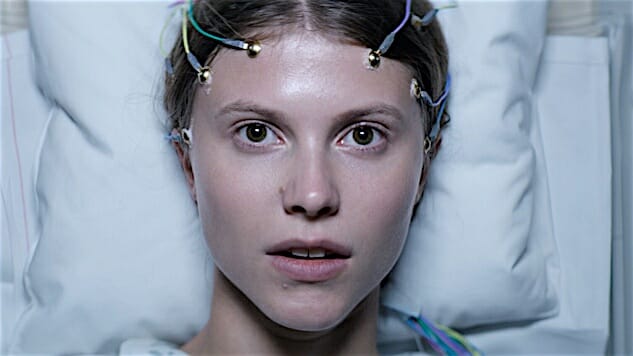
Thelma (Eili Harboe) is a meek and quiet young woman moving away from her strict Christian parents (Henrik Rafaelsen, Ellen Dorit Petersen) for the first time in her life. To study Biology at a Norwegian university. She’s devoted to her faith and doesn’t indulge in alcohol, drugs or other earthly desires. But all of that changes when she sits next to Anja (Kaya Wilkins), a warm-hearted and empathetic schoolmate, during a study session. The two don’t even know each other yet, but Thelma’s close proximity to a girl she feels an intense attraction toward is enough to trigger a violent seizure, which may or may not be the result of her intense rejection of her feelings, spurned by her religious upbringing. With subtle yet passionate performances by its two leads, the film would have worked fine as a straight drama about Thelma’s journey towards (hopefully) acknowledging her nature. What makes Thelma so special is in the way Trier and co-writer Eskil Vogt wrap this already palpable drama around a fairly downplayed supernatural horror premise with surgical precision. —Oktay Ege Kozak
16. Lisa Frankenstein
Year: 2024
Director: Zelda Williams
Stars: Kathryn Newton, Cole Sprouse, Liza Soberano, Henry Eikenberry, Joe Chrest, Carla Gugino
Rating: PG-13
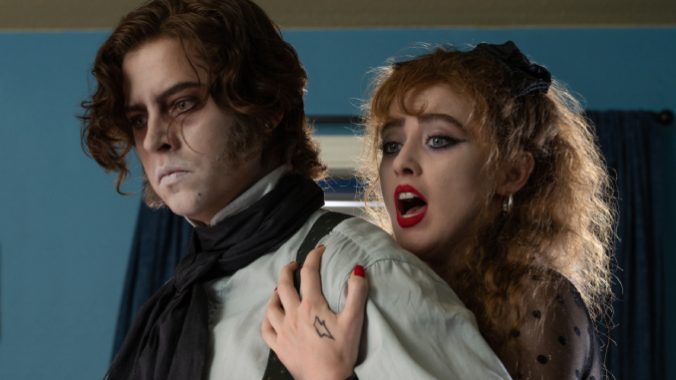
Lisa Swallows (Kathryn Newton) is a zany, traumatized outcast who loves The Cure and hates her stepmom. After visiting an overgrown cemetery one night, a storm brings her graveyard crush (a handsome century-old bust) to life. The undead romance that follows is wondrous, thrilling and hilarious (with Newton giving all her charm and Cole Sprouse giving tons of scattered grunts). Lisa not only navigates first love, but also learns to hide it, especially when her zombie beau opens her eyes to more unhinged activities (murder included). From the pen of Jennifer’s Body writer Diablo Cody, Lisa Frankenstein is a racket of heartfelt monster love that is packed with ‘80s fun (including the most inventive use of a tanning bed since Final Destination.)—Sage Dunlap
17. Piggy
Year: 2022
Director: Carlota Pereda
Stars: Laura Galán, Richard Holmes, Carmen Machi, Irene Ferreiro, Camille Aguilar, Claudia Salas
Rating: NR
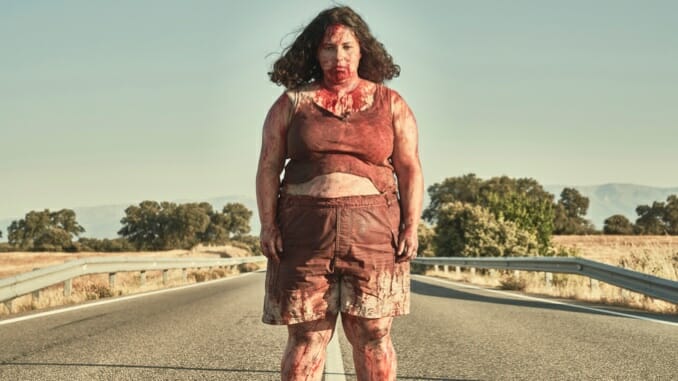
Secret first loves, cliquish mean girls and strained family dynamics take their most disquieting turns in Piggy (Cerdita), Spanish director Carlota Pereda’s feature debut. Expanding upon her 2018 short of the same name, the film focuses on a fat teenage girl named Sara (Laura Galán) who endures intolerance from her peers over the size of her body. Though the film’s sensitive subject matter is handled with mindful grit—never once basking in the humiliating gaze fellow teens cast upon Sara’s body—it doesn’t necessarily succeed in subverting similar narrative conventions, nor does it meaningfully transgress societal perceptions of fatness or girlhood. In her small Extremadura town, Sara is the subject of unyielding persecution. Due to her weight, she is given the nickname “Piggy,” always blurted by her abusers with venomous hostility. On a scorching summer’s day, Sara dons an ordinary pink bikini and heads to the public pool, only to be met with a noxious pack of mean girls led by the senselessly callous Maca (Claudia Salas). Maca begins to corral the girls into taunting Sara over her body, nearly drowning her with a water net before she eventually frees herself. While one of the girls, Claudia (Irene Ferreiro), clearly finds Maca’s behavior wrong, she doesn’t intervene or defend Sara. Thus the girls run off with Sara’s clothes and possessions, forcing her to walk home under the hot Spanish sun clad only in her bikini. It’s not long before Sara is attacked again, this time by a car full of boys. They chase Sara down the road, stop their vehicle and begin to manhandle her, threatening violence and mocking her appearance. After she escapes their clutches, she runs sobbing down a rural dirt road—where she witnesses the mean girls from earlier being loaded into an unmarked van. Though they bang on the window and plead for Sara to help them, she merely stares as the man in the driver’s seat assesses whether or not she’ll cause him trouble. When her expression guarantees secrecy, the man tosses a towel for Sara out of the window—a wordless pact that promises their mutual protection. In Pereda’s original short, this synopsis encompasses the entirety of the film; in this feature, the secret shared between Sara and the girls’ abductor morphs into lusty desire. Though the brunt of Sara’s mistreatment is in the form of abject verbal abuse (aside from the pool net drowning and drive-by harassment), it is also the only tangible violence the audience sees committed against a woman. Sara’s tormentors are kidnapped and there’s talk of a local woman being murdered in her home, but the camera never captures the physical brutality these women suffer. There’s plenty of bloodshed—particularly during the film’s concrete-walled conclusion—but it’s never due to exploitative female torture. For this mindful departure from most exploitation films of the same vein, Piggy deserves plenty of props.—Natalia Keogan
18. Summer of 84
Year: 2018
Director: François Simard
Stars: Graham Verchere, Judah Lewis, Caleb Emery, Cory Gruter-Andrew, Jason Gray-Stanford, Tiera Skovbye, Rich Sommer
Rating: NR

Summer of 84 meets somewhere in the middle of Stranger Things and Friday the 13th, bringing slasher conventions to a nostalgic, fun-loving horror flick. A group of teen boys investigates the identity of the elusive Cape May Slayer, whom 15-year-old conspiracy theorist Davey Armstrong believes is responsible for killing 13 teen boys in their town, Cape May, Oregon. The small town ‘80s setting, in which the boys bide their time with freewheeling bike rides and treehouse meetings, imbues the film with an adventurous spirit; while ‘80s-set films can easily result in cheesy, repetitive replications of a bygone era, the unsupervised adventure of Summer of 84 lends to a heart-pounder, made even more entertaining with cheeky writing and dark humor.—Sage Dunlap
19. Amer
Year: 2009
Director: Hélène Cattet, Bruno Forzani
Stars: Cassandra Forêt, Charlotte Eugène Guibeaud, Marie Bos
Rating: NR

Belgian duo Hélène Cottet and Bruno Forzani first made the leap to feature-length storytelling in this exquisitely unnerving 2009 gem, which they’ve described as a pointedly postmodern take on the giallo. Told across three color-saturated vignettes, Amer charts the gradual development of Ana (Cassandra Forêt, then Charlotte Eugène Guibeaud, then Marie Bos) through childhood, early adolescence and adulthood. Simultaneously, Amer positions Ana within the sexualized and victimized archetypes women were made to embody in old-school gialli, exploring and deconstructing the genre’s voyeuristic proclivities while letting us share the perspective of the would-be prey. Doing away with a discernible plot in order to focus on heightening atmosphere, the pair are arguably pursuing a more artistically pure and creatively distilled vision of the giallo. Through Amer, with its constant state of ethereality and psychedelic sensation, Cottet and Forzani first emerged as genre stylists too enamored of the giallo’s sensory overkill to make anything other than stupefyingly vivid tone poems.–Isaac Feldberg
20. Innocence
Year: 2004
Director: Lucile Hadžihalilović
Stars: Marion Cotillard, Hélène de Fougerolles, Zoé Auclair
Rating: R

Six-year-old Iris is delivered to the common room of a secluded boarding school via a coffin, where she is greeted by a group of uniform adolescent girls, only distinguishable by the ribbons in their hair. Each ribbon signifies a hierarchy of age, with the oldest girls sporting violet ribbons and Iris, the youngest of the sort, receiving a handed down ribbon. The looming school and its overgrown surroundings give Innocence a suffocating atmosphere, but the film delivers a sobering narrative of the rigid expectations that girls face while growing up, as well as the adolescent innocence that is both coveted and exploited in young women. In all the ceremonious rituals of ribbon exchanges and dance lessons, director Lucile Hadžihalilović depicts her female ensemble through a horrifying and unyielding lens, one that explores coming-of-age and systematic hierarchies through its oppressive frame.—Sage Dunlap
21. The Lure
Year: 2015
Director: Agnieszka Smoczynska
Stars: Marta Mazurek, Michalina Olszanska
Rating: NR

In Filmmaker Magazine, director Agnieszka Smoczynska called The Lure a “coming-of-age story” born of her past as the child of a nightclub owner: “I grew up breathing this atmosphere.” What she means to say, I’m guessing, is that The Lure is an even more restlessly plotted Boyhood if the Texan movie rebooted The Little Mermaid as a murderous synth-rock opera. (OK, maybe it’s nothing like Boyhood.) Smoczynska’s film resurrects prototypical fairy tale romance and fantasy without any of the false notes associated with Hollywood’s “gritty” reboot culture. Poland, the 1980s and the development of its leading young women provide a multi-genre milieu in which the film’s cannibalistic mermaids can sing their sultry, often violently funny siren songs to their dark hearts’re content. While Ariel the mermaid Disney princess finds empathy with young girls who watch her struggle with feelings of longing and entrapment, The Lure’s flesh-hungry, viscous, scaly fish-people are a gross, haptic and ultimately effective metaphor for the maturation of this same audience. In the water, the pair are innocent to the ways of humans (adults), but on land develop slimes and odors unfamiliar to themselves and odd (yet strangely attractive) to their new companions. Reckoning with bodily change, especially when shoved into the sex industry like many immigrants to Poland during the collapse of that country’s communist regime in the late ’80s, the film combines the politics of the music of the time with the sexual politics of a girl becoming a woman (and the musicals that exploit the same). And though The Lure may bite off more human neck than it can chew, especially during its music-less plot wanderings, it’s just so wonderfully consistent in its oddball vision you won’t be able to help but be drawn in by its mesmerizing thrall.—Jacob Oller
22. Donnie Darko
Year: 2001
Director: Richard Kelly
Stars: Jake Gyllenhaal, Jena Malone, Maggie Gyllenhaal, Drew Barrymore, Mary McDonnell, Katharine Ross, Patrick Swayze, Noah Wyle, Stu Stone, Daveigh Chase, James Duval
Rating: R

Apparently, at some point in its burgeoning cult ascendency, director Richard Kelly admitted that even he didn’t totally get what’s going on in Donnie Darko—going so far as to release a “Director’s Cut” in 2005 that supposedly cleared up some of the film’s more unwieldy stuff. Yet another example of a small budget wringed of its every dime, Kelly’s debut crams love, weird science, jet engines, superhero mythology, wormholes, armchair philosophy, giant bunny rabbits and Patrick Swayze (as a child molester, no less) into a film that should be celebrated for its audacity more than its coherency. It also helps that Jake Gyllenhaal leads a stellar cast, all totally game. In Donnie Darko, the only thing that’s clear is Kelly’s attitude: that at its core cinema is the art of manifesting the unbelievable, of doing what one wants to do when one wants to do it.—Christian Becker
23. The Neon Demon
Year: 2016
Director: Nicolas Winding Refn
Stars: Elle Fanning, Keanu Reeves, Christina Hendricks, Jena Malone
Rating: R
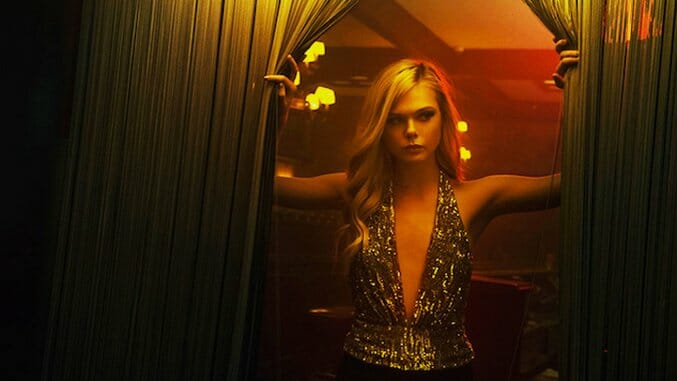
If Nicolas Winding Refn—anthropomorphic cologne bottle; asexual jaguar—is going to make a horror film, Nicolas Winding Refn will make a horror film about the things that scare Nicolas Winding Refn most: asymmetry, sex, fatherhood. In The Neon Demon, every character is either someone’s daughter or a deranged daddy figure, both thirsty for the kind of flesh only Los Angeles can provide, the roles of predator and prey in constant, unnerving flux. Part cannibal-slasher movie and part endlessly pretty car commercial, Refn’s film about a young model (Elle Fanning) making it in the fashion industry goes exactly where you think it’s going to go, even when it’s trying as hard as it can to be weird as fuck. But despite his best efforts, Refn sustains such an overarching, creeping atmosphere of despair—such a deeply ingrained sense of looming physical imperfection, of death—that it never really matters if The Neon Demon doesn’t add up to much of anything more than a factory showroom of the many gorgeous skins it inhabits, violently or not.—Dom Sinacola
24. My Animal
Year: 2023
Director: Jacqueline Castel
Stars: Bobbi Salvör Menuez, Amandla Stenberg, Heidi von Palleske, Cory Lipman, Charles F. Halpenny, Harrison W Halpenny, Joe Apollonio, Scott Thompson, Dean McDermott, Stephen McHattie
Rating: R
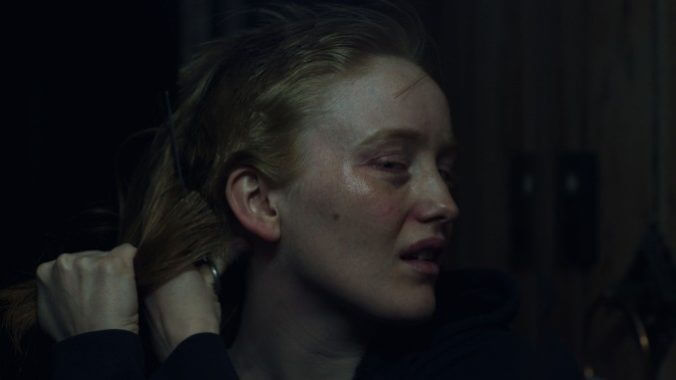
A teen girl in rural Ontario must come to terms with her identity as both a lesbian and a werewolf, making this a nuanced coming-of-age that explores the isolation that queer people face in rural upbringings. While we typically see monster tales represent queer stories onscreen, My Animal gives its main character a layered transformation of both body and sexuality, resulting in a lycanthropic thriller that is much darker than one might expect. In the stretches of snow, the moonlit scenes of werewolf transformation are flashy and disorienting, and the synthy ‘80s soundtrack gives the film an even more chilling effect.—Sage Dunlap
25. Thoroughbreds
Year: 2018
Director: Cory Finley
Stars: Anya Taylor-Joy, Olivia Cooke, Anton Yelchin, Paul Sparks, Francie Swift
Rating: R
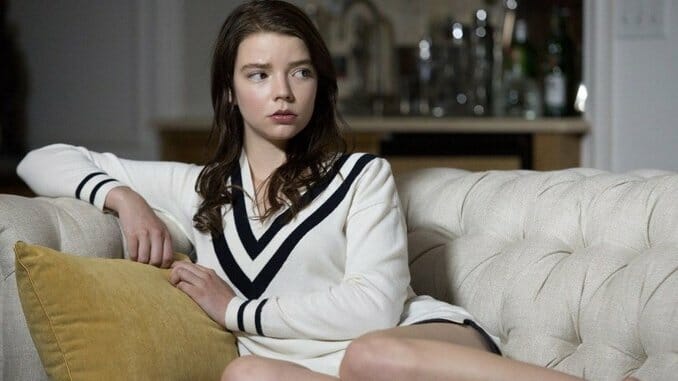
The line separating thrillers and horror films is razor thin. In the case of Cory Finley’s feature debut, Thoroughbreds, the former fits more suitably than the latter, but to take a page from Potter Stewart, I know horror when I see it, and Thoroughbreds toes that line with macabre confidence. The film isn’t particularly frightening, but makes up for that with suspense to harrow the soul. Thoroughbreds rattles us by pitting posh cultivation against human nihilism: When you’re scared, you tend to be scared in the moment. When you’re rattled, there’s no telling how long you’ll stay that way. That’s Thoroughbreds in a nutshell: A sobering, beautiful movie that’ll haunt you for weeks after watching it. Lily (horror queen ascendant Anya Taylor-Joy) is the epitome of high breeding: impeccably dressed and made up, unflappably well-mannered, academically accomplished with a bright future ahead of her. Amanda (Olivia Cooke) is her polar opposite, a social outcast, friend to no one, possessed of a barbed tongue and a caustic temperament. They’re childhood chums who became estranged from one another over years, an everyday occurrence spurred by an incident involving Amanda’s family horse and an act of casual butchery. That all happens in the film’s past tense. In its present tense, the girls reconnect, Lily acting as Amanda’s tutor, and as they do the latter begins to rub off on the former and draw out her dark side. Lily and Amanda’s grim candor is couched in limited settings, primarily the grand house Lily lives in with her stepdad Mark (Paul Sparks) and her mother, but Thoroughbreds’ sense of confinement is a necessary component for its success as genre. Finley creates a space from which they can both break out, a gorgeous veneer akin to limbo. Within reason we can’t blame them for wanting to escape. Finley does a lot with very little apart from the raw talent of his leads. If this is what he’s capable of as a first-timer, we should rightfully dread his follow-up.—Andy Crump
26. The Transfiguration
Year: 2016
Director: Michael O’Shea
Stars: Eric Ruffin
Rating: NR
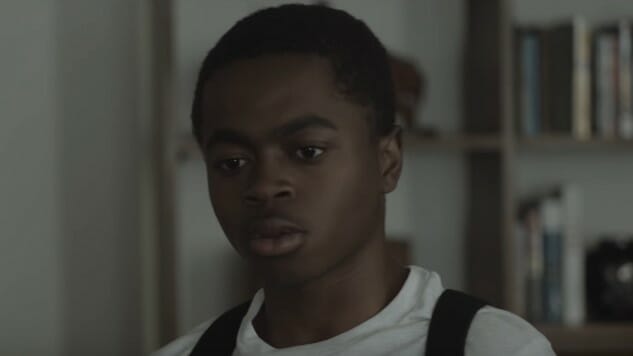
Michael O’Shea’s The Transfiguration refreshingly refuses to disguise its influences and reference points, instead putting them all out there in the forefront for its audience’s edification, name-dropping a mouthful of noteworthy vampire films and sticking their very titles right smack dab in the midst of its mise en scène. They can’t be missed: Nosferatu is a big one, and so’s The Lost Boys, but none informs O’Shea’s film as much as Let the Right One In, the unique 2009 Swedish genre masterpiece. Like Tomas Alfredson’s bloodsucking coming-of-age tale, The Transfiguration casts a young’n, Milo (Eric Ruffin), as its protagonist, contrasting the horrible particulars of a vampire’s feeding habits against the surface innocence of his appearance. Unlike Let the Right One In, The Transfiguration may not be a vampire movie at all, but a movie about a lonesome kid with an unhealthy fixation on gothic legends. You may choose to view Milo as O’Shea’s modernized update of the iconic monster or a child brimming with inner evil; the film keeps its ends open, its truths veiled and only makes its sociopolitical allegories plain in its final, haunting images.—Andy Crump
27. Talk to Me
Year: 2023
Director: Danny Philippou, Michael Philippou
Stars: Sophie Wilde, Miranda Otto, Alexandra Jensen, Joe Bird, Otis Dhanji, Zoe Terakes, Chris Alosio
Rating: R
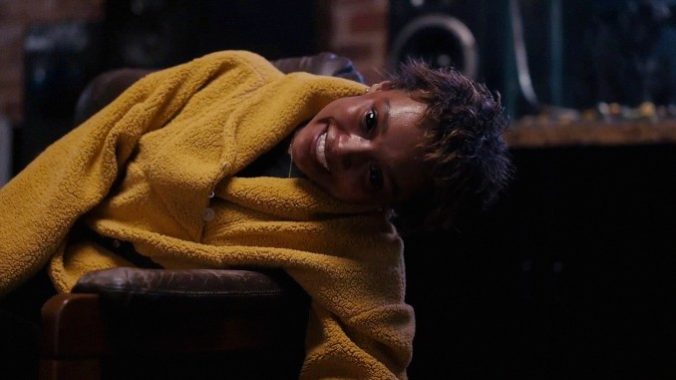
Talk to Me, the feature directorial debut of RackaRacka YouTube creators Danny and Michael Philippou is fierce, fun, and steeped in youthful energy. It’s a film that’s willing to go to some truly dark places in its exploration of grief, death and what it means when we reach too far into the beyond, but it’s also never afraid to laugh along the way. Talk to Me is a séance story, specifically a séance story revolving around a severed, ceramic-encased hand with a mysterious history. These days, the hand is hanging out in the possession of some Australian teenagers, who break it out at parties for 90-second “talk to me” sessions in which partygoers can briefly commune with, and be possessed by, the dead. It’s a quick thrill, the kind of thing perfect for taking smartphone videos to share on social media, and it’s all so detached and laugh-worthy that people either think it’s fake or liken it to a more pedestrian thrill like a drug trip. But when teenage Mia (Sophie Wilde), who recently lost her mother, hears about the hand, she’s eager to see if she actually can reach the other side, where her lost Mom might be waiting. Her best friend Jade (Alexandra Jensen) thinks it’s all fake, but she’s still willing to accompany Mia to a party, where a brief encounter with the hand will change both their lives. This is, even non-horror devotees will notice, a riff on classic séance narratives in which humans open a door that’s not to be trifled with, and let something dark and dangerous out. Talk to Me never tries to mask its roots in time-honored formulas, but approaches its tropes and recognizable story beats with an earnestness that’s both endearing and frank. And the horror, when it hits, hits with visceral intensity. Anyone who’s ever seen a RackaRacka horror short knows how well the Philippou brothers can craft a surprising scare, and those scares emerge with real ferocity in Talk to Me. At a time when we spend far too much energy trying to swing horror movies into one side or the other of a senseless binary, Talk to Me reminds us that fun and true existential terror don’t have to be mutually exclusive areas of storytelling. Talk to Me is as funny as it is frightening, as poignant as it is pulse-pounding, and the whole thing is rooted in a modern reality that feels like you could step into it tomorrow, which only adds to both the humor and the fear.—Matthew Jackson
28. The Craft
Year: 1996
Director: Andrew Fleming
Stars: Robin Tunney, Fairuza Balk, Neve Campbell, Rachel True
Rating: R
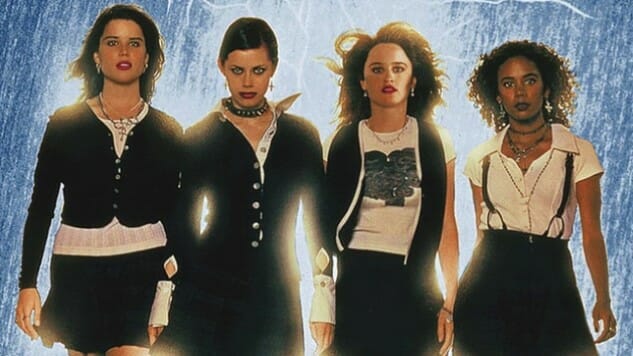
The Craft is one of those touchstones of ’90s, teen-friendly horror (see: I Know What You Did Last Summer) that has blossomed into the ranks of “cult films” in recent years, whether or not it really deserves the nostalgia. You can at least admire its deft evolution of John Hughes-era high school movie tropes, presenting an almost Mean Girls clique of girls with the added fun of witchcraft, although the inspiration might be more accurately attributed to the likes of Heathers. This film came along during that brief, odd period of the ’90s when “starring Fairuza Balk” was not an altogether weird thing to see on a movie poster, and it’s a better, quirkier film for it. We all know where the story is going, once these gals start dabbling in witchcraft for the causes of popularity and petty revenge–nobody gets away with being this bitchy in fiction. It’s hammy, and melodramatic, and protagonist Robin Tunney is easily the least interesting of her own clique, and yet The Craft is still oddly watchable today. It’s a well-preserved time capsule of a very specific moment in the twilight of the MTV Generation. —Jim Vorel
29. Tiger Stripes
Year: 2023
Director: Amanda Nell Eu
Stars: Zafreen Zairizal, Deena Ezral, Piqa, Shaheizy Sam, June Lojong, Khairunazwan Rodz, Fatimah Abu Bakar
Rating: NR

In a similar vein of Ginger Snaps, Tiger Stripes takes on the horrors of puberty with an inventive approach to body horror. Inspired by her real cats, debut director Amanda Nell Eu used animal metamorphosis as an allegory for puberty and femininity. Zafreen Zairizal gives a powerhouse lead performance as 12-year-old Zaffan, who is the first of her friend group to get her period. Unable to talk about her experience with her friends or her mother (who reacts to the news with dismay), Zaffan feels isolated by this unwelcomed change—especially after being ostracized at school (where all of the bathrooms were shut down in reaction to the news). Imaginative and hilarious, Eu’s debut is an important fixture of feminist body horror. —Sage Dunlap
30. Hatching
Year: 2022
Director: Hanna Bergholm
Stars: Siiri Solalinna, Sophia Heikkilä, Jani Volanen, Reino Nordin, Saija Lentonen
Rating: NR
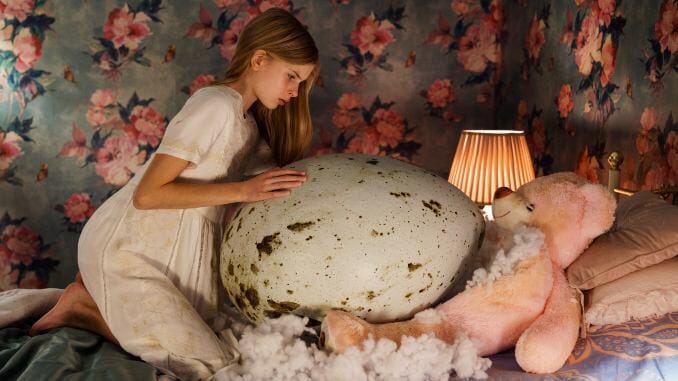
Pubescent pressures are compounded by the presence of a horrifying mutant doppelganger in Hatching, Finnish director Hanna Bergholm’s debut feature. Written by Ilja Rautsi, the film is a domestic drama at its core, detailing the toxicity inherent to a controlling mother-daughter dynamic. However, what elevates Hatching to the upper echelons of the familial horror-drama is its inspired use of practical effects and puppeteering, resulting in a genuinely unsettling movie monster that appears all the more uncanny in its originality. While the finer plot details might not feel as fresh as its central doppelganger entity, Hatching hits the right emotional cues nonetheless—instilling its fair share of thrilling scares while stirring adolescent pathos. In an idyllic Finnish suburb, a seemingly perfect family lives a seemingly perfect life. At least, that’s the image that the family matriarch (Sophia Heikkilä) carefully curates via regular vlog posts. Her videos capture their home’s polished decor, making sure to highlight elegant floral details and crystal chandeliers. Just as aesthetically congruent as the home’s interior is the family that resides inside it: The father (Jani Volanen) is well-dressed and mild-mannered, their bespectacled young son Matthias (Oiva Ollila) endearingly precocious and their 12-year-old daughter Tinja (Siiri Solalinna) a rising local gymnast. As the anxiety surrounding an upcoming competition threatens to unravel her, Tinja finds a mysterious object in the woods surrounding her family’s home: A speckled egg, solitary in the world without a mother to brood it. Just a short time later, the egg grows ten times in size—and the being germinating within begins to emerge. A gangly, gnarly bird-like creature bursts into the world, viewing Tinja as its proper mother. In keeping its plot uncomplicated, and without nodding too heavily to its cinematic inspirations, Hatching is given the space to actually come into its own. By singularly focusing on the monster’s unique appearance and qualities, the film evades easy comparison—even if it does boast a handful of predictable narrative beats.–Natalia Keogan







































